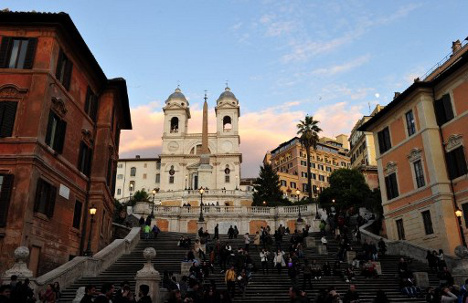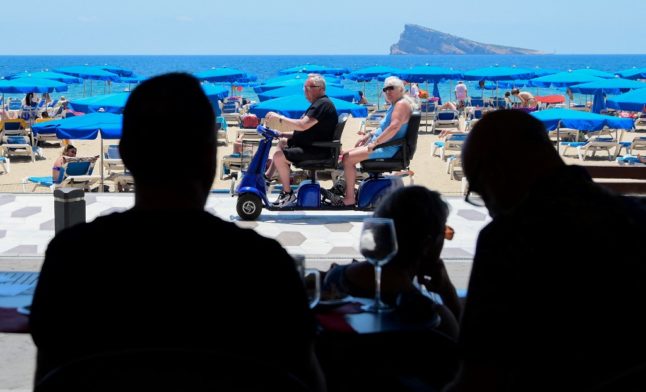Many a tourist has grumbled that they are 'just steps' – but this staircase is an institution in Rome.
Here's everything you need to know about Italy's most famous steps.
1. There are exactly 135 steps
However, if you try to count them yourself you may reach the figure of 136; the drainage system is elevated and so is often mistaken for the first step. Also, the steps are the widest stairway in all of Europe – making them a perfect meeting place.
2. Why 'Spanish'?
It may seem odd that a landmark in Italy's capital, designed by an Italian architect and funded by a French diplomat (Étienne Gueffier, whose bequest of 20,000 Scudi – an old Italian currency), gets its name from Spain.
The Piazza di Spagna at the foot of the steps is named after the Spanish Embassy there, so the name simply extended to the steps, which were built in the 18th century to connect both the Embassy and the Trinita dei Monti church (which was under French patronage) with the Holy See – the seat of the Catholic Church in Rome – in the square below.
3. You can't eat your sandwiches there
 They're a popular meeting place, but no food allowed. Photo: AFP
They're a popular meeting place, but no food allowed. Photo: AFP
In the middle of the city's shopping district, the steps may seem like a perfect place to pause for a picnic – but not so fast. Roman urban regulations prevent anyone from tucking into lunch on the steps, as part of an effort to keep them pristine. After the latest restoration, you can expect this rule to be even more vigorously enforced.
4. English influences
British poet John Keats once lived in the building adjacent to the steps – now the Keats & Shelley museum, which is memorabilia about the English Romantics poets in Italy and is well worth a visit for poetry fans. And to the left of the steps you'll find Babington's, an English tea room which has been serving tea to locals and homesick Brits since 1893.
5. A controversial McDonald's
You may stop for a bite at Italy's first McDonald's restaurant after visiting the steps. This restaurant, opened in 1986, led to protests by locals who argued fervently that the American chain had no place in Rome's historic centre.
The protests in turn led to the birth of Italy's Slow Food movement – now an international organization counting 100,000 members worldwide and promoting alternatives to fast food.
6. Pop culture influence
The steps hit the big screen in Audrey Hepburn film A Roman Holiday, where the steps' status as a popular meeting place made them the perfect location for Gregory Peck's character to 'accidentally' bump into Hepburn. They've also been mentioned in a Bob Dylan song and featured in an Everybody Loves Raymond episode.
7. An ugly boat
The fountain at the foot of the steps is called 'Fontana della Barcaccia' or Fountain of the Ugly Boat. But why? A city legend says the fountain was built on papal orders, inspired by a flood which carried a fishing boat all the way to the square.
8. Seasonal decor
Time your visit right, and you could get to see some of the Spanish Steps' seasonal decorations. In spring, the stairway is decorated with pink azaleas for a month, celebrating the anniversary of Rome's founding. As Christmas approaches, a 19th century crib is displayed on the first level of the steps.
They have also been used for other one-off events; the fall of the Berlin Wall was marked with a multimedia event and replicas of parts of the wall on the steps, for example, and the re-opening ceremony after the steps' renovation saw light shows and musical performances.



 Please whitelist us to continue reading.
Please whitelist us to continue reading.